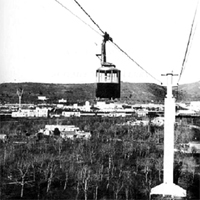
The City from the Wire the Aerial Cable Transport for the Urban Mobility
Abstract
systems, lifts, cable cars, escalators, moving walkways, etc.. A focus is also provided in relation to the ropeways, currently operating in many cities around the world, highlighting the effectiveness of mobility solutions at high altitude, although not necessarily intended for the slope, taken in metropolitan contexts outside of Europe since the Seventies. Furthermore a specific attention it is payed to the plants currently disused in Turin and in Naples with a special regard to the possible recovery prospects in a new urban mobility system. For the city of Naples it is presented also a new project for a rope way between the two famous museums: the Archeological Museum, which is located inside the inner city, and the Capodimonte one which is at top if the hill of Capodimonte inside the well known area of the royal palace. Finally some new projects are presented regarding the cities of Rome and Milan. For the two biggest Italian cities there are two ropeways designed that will, in the case of Milan, link urban areas along a path that includes interchanges and stations in major urban hubs, starting from the airport; in the case of Rome the “link” will cross the river Tevere in order to connect two large districts of the city: the EUR and Magliana, historically
splitted by the barrier river".
Full Text
PDF (English)Riferimenti bibliografici
Verne, J. (1995), Parigi nel XX secolo, Tascabili Economici Newton, Roma.
Alexander James Wallis-Tayler, (1920), Aerial or wire rope-ways: their construction and management, C. Lockwood and son, London.
Capasso, A. (a cura di) (2001), Trasporto verticale e città. Gli impianti di risalita nella mobilità urbana. Dagli ascensori alle funivie, CLEAN, Napoli.
DOI: http://dx.doi.org/10.6092%2F1970-9870%2F523
Refback
- Non ci sono refbacks, per ora.

This work is licensed under a Creative Commons Attribution 3.0 License.



